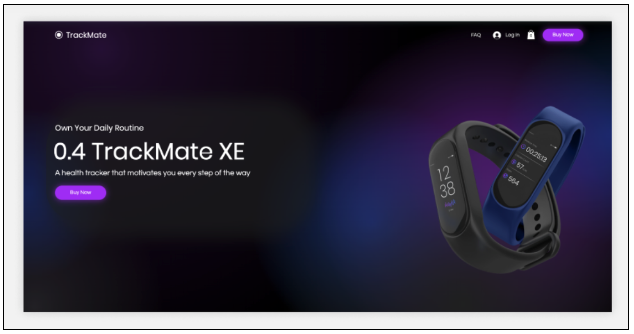
4 Skills Your Students Need to Drive Landing Page Conversions in 2024
Landing pages are an important part of any digital marketing campaign. A well-designed and optimised landing page can drive conversions and generate quality leads.
Compared to popups, signup boxes, and wheels of fortune, landing pages have the best signup rates at 23% according to Omnisend. This makes optimising these pages top of the list for businesses wanting to make the most of their organic and paid marketing activities.
But there’s skill involved in landing page optimisation. It’s not just about making it pretty and fast, there are lots of elements to consider to encourage users to stay on the page and share their personal information.
What is landing page optimisation?
A landing page is a stand-alone page created for a specific campaign. People come to the page from another channel such as a social media post, paid ad or email.
The purpose of a landing page is to provide visitors with campaign information and encourage them to take action (e.g. input an email address).
Landing page optimisation is the process of improving the page to drive conversions. This involves making incremental changes (based on data and insights) to improve each element of the page.
What are the benefits of landing page optimisation?
43% of marketers say generating leads is their #1 priority according to HubSpot. Landing pages offer an effective way of doing that.
However, there are other tangible benefits to landing page optimisation.
- Focused and targeted messaging
- Easy tracking and measurement
- Custom design
- A/B testing opportunities
- Optimise for different traffic sources
What skills do your students need to optimise landing pages?
With so many business benefits, your students need to know how to optimise landing pages. So what key skills and knowledge do they need?
1. Landing page development
There are a number of key elements on a landing page. Each element is designed to drive user engagement, reduce abandonment rates and maximise conversions.
The anatomy of a landing page includes:
- A header
- A ‘hero’ above the fold section (headline, description and image and CTA)
- Eye-catching images
- A strong and relevant CTA
- A short and intuitive data capture form
- Social proof (e.g. a testimonial or review)
- FAQs
- Simple footer
Here’s a great example using succinct messaging and an eye catching image from Trackmate.

2. Optimisation techniques
Once a landing page is up and running, it’s important to track performance to optimise each of these elements.
There are 3 stages to landing page optimisation – identifying problems or issues, experimenting and testing and measuring the impact of changes to track success.
At each of these stages, there are tactics you can use to drive optimisation such as:
- Heat maps – Scroll, click and move heat maps will help identify the key areas people are clicking on the page. Are there any areas that are not clickable but people think should be? Are people failing to notice or click on CTAs?
- Surveys – Have a survey as a pop-up or install a widget to find out why they are leaving the page or ask what could be better.
- Use SEO – Even landing pages need to be optimised for organic search. Are target keywords being used on the page? Are you including alt tags or meta descriptions?
- Include trust signals – It’s important to have ‘social proof’ to show the value of a product or service. This includes testimonials, reviews, ratings, original survey or whitepaper stats, trust seals and a privacy policy.
Tip: Tools like Hotjar, Unbounce, Google analytics and Ahrefs can help your students implement and measure landing page optimisation.
3. A/B testing
A/B testing or split testing is an important part of landing page optimisation.
It enables marketers to have two versions of a page running to see which one performs best with its target audience. The winning variation would then be chosen to run as the live page.
It is possible to run tests for multiple pages, but make sure to assign equal weights to each page. So for testing two pages the split would be 50/50 but for three it would be 33/33/33.
There are a few A/B tests your students can run which are:
- Image vs. video
- Headlines
- Length of page (short or long)
- Layout
- Copy
- Forms (e.g. number of fields)
- CTAs
Be aware that marketers need to drive a certain amount of traffic through test pages before getting statistically significant results.
4. Content creation
While landing page content is usually short, it needs to pack a punch.
When people come to a landing page they have already been primed by clicking through on another channel, so its purpose is to provide more information and be persuasive.
That requires the copy to refer to the referral page and reemphasize the offer or message. There are several ways to do this:
- Focus on the benefits – What will the user get and why is it better than anything else on offer?
- Write a great headline – Convey what’s great about this offer, why the user should take advantage of and tap into FOMO (fear of missing out).
- Include testimonials – Loyal and happy customers are the secret weapon for landing pages. Promote what customers or clients think as they will often put it better!
- Keep it simple – Try to keep copy simple even if what’s being promoted is technical or complicated. Brevity is best and account for non-native speakers.
- Prompt action – The goal of a CTA is to make people take action so think about placement and content.
- A/B test – As we’ve already said, test all elements of your copy to get the best results.
Tip: Consider using AI tools such as ChatGPT or Jasper to generate content for landing pages. Even if the content isn’t used, it can help get the creative juices flowing!
Give your students experience in landing page optimization
Demo our free landing page optimisation simulation to see what you can offer your students. See why universities, schools, and learning providers trust our simulation solutions to give students the skills they need to succeed in the workplace.

